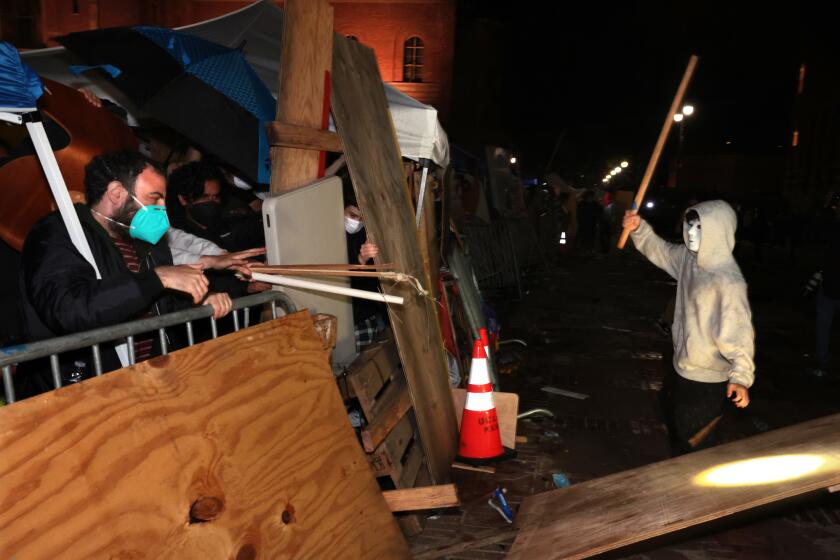Wildlife and off-roaders gain room to roam in California’s new desert protection act

In the latest round of a 25-year battle to save the California desert, House lawmakers approved a sweeping conservation bill Tuesday that designates more terrain for wildlife and off-roaders alike and sets the stage for a final signature by President Trump.
The California Desert Protection and Recreation Act, which does not come with funding, completed efforts that Sen. Dianne Feinstein started in 1994 to resolve conflicts among conservationists, off-road vehicle riders, miners, cattle ranchers, hunters, military training grounds and renewable energy interests.
The act, which was part of a package of conservation bills affecting states nationwide, creates 375,000 acres of new wilderness areas including rugged mountains, Joshua tree forests, dry lake beds and petroglyphs. It also designates 75 miles of waterways — including White Water Creek in the San Bernardino Mountains — as wild and scenic rivers.
If signed by the president, the law would add 35,292 acres to Death Valley National Park and 4,543 acres to Joshua Tree National Park. It would also establish an 18,600-acre Alabama Hills National Scenic Area on the east side of the Sierra Nevada and an 81,800-acre Vinagre Wash Special Management Area in Imperial County.

These lands embrace overlapping ecological zones that are home to hundreds of plants and animals despite scant rainfall, withering heat and decades of mining, ranching and off-roading. Among the species that populate these lands are bighorn sheep, fringe-toed lizards, the desert tortoise and the federally endangered Amargosa vole, one of the rarest vertebrates on Earth.
The act also makes permanent six existing off-highway vehicle, or OHV, sites covering more than 200,000 acres. The first national network of off-highway vehicle recreation areas includes Dumont Dunes, El Mirage, Rasor, Stoddard Valley, Johnson Valley and Spangler Hills.
Plans call for expanding the boundaries of some of those areas. The Spangler Hills area east of the city of Ridgecrest, about 154 miles north of Los Angeles, for example, will grow by 30,260 acres, or about 49%.
“I’ve been fighting for this for so long it seems almost too good to be true,” said Randy Banis, a longtime advocate of the off-roading community. “The overall health of the desert will improve, and codified OHV recreation will be more sustainable going forward.”
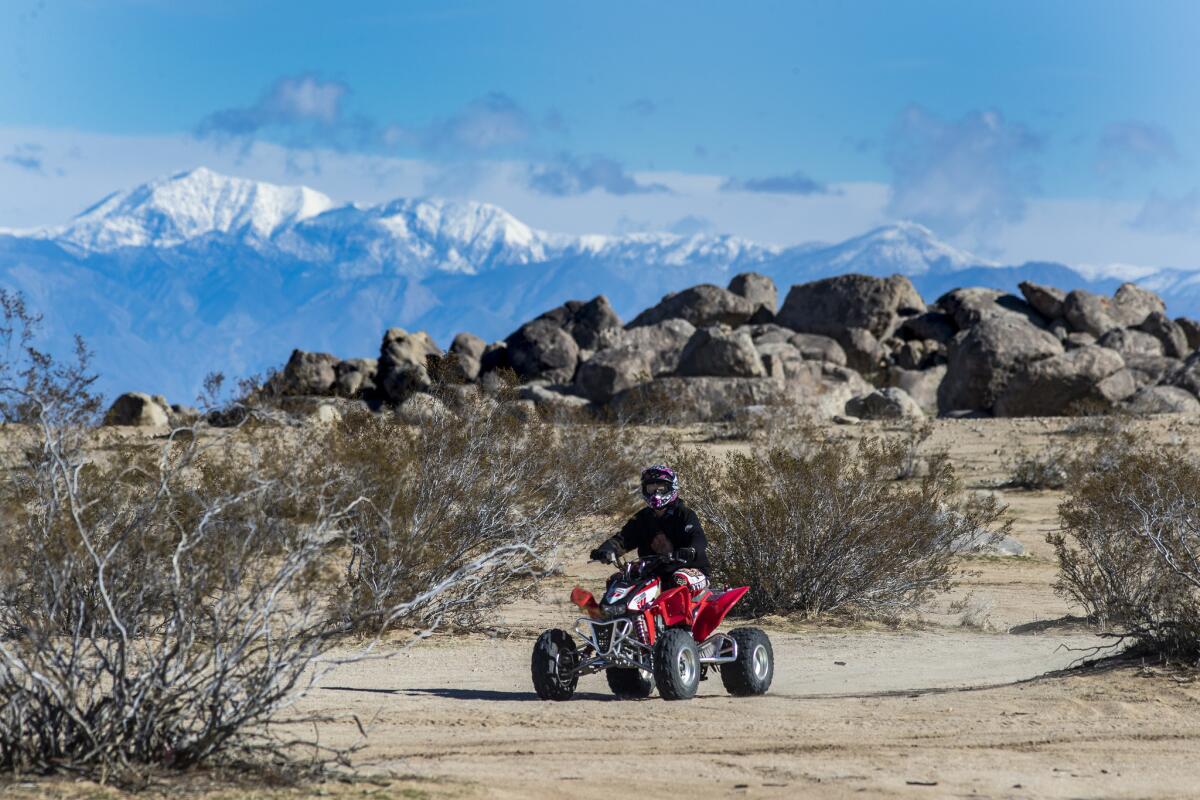
Those benefits came as a bittersweet surprise for some off-roaders in the rough and rocky Spangler Hills — one of the few places left in the California desert where they can run free anywhere, anytime.
Bill Stratman, 51, of Paso Robles, whose family and friends camp in the area on weekends before the summer’s heat bakes the earth, shook his head in disbelief and said, “You’ve got to be kidding me.
“It’s been sad over the years to see more and more signs going up across the desert that warn, ‘Not for use by off-road vehicles,’ ” he said. “So, this is incredibly good news.”
The act was co-sponsored by Sens. Feinstein (D-Calif.) and Kamala Harris (D-Calif.), and Reps. Paul Cook (R-Yucca Valley), Juan Vargas (D-San Diego), Raul Ruiz (D-Palm Desert) and Pete Aguilar (D-Redlands) and is the result of years of often contentious negotiations among elected officials, environmental organizations, business owners, veterans, faith leaders, historians, off-highway and RV organizations, rock hounds and tribal leaders.
Feinstein took up the desert cause immediately after she joined the Senate in 1992. It was a time when critics said the Bureau of Land Management had, in many ways, failed to plan a balanced and sustainable future for more than 12 million acres of desert.
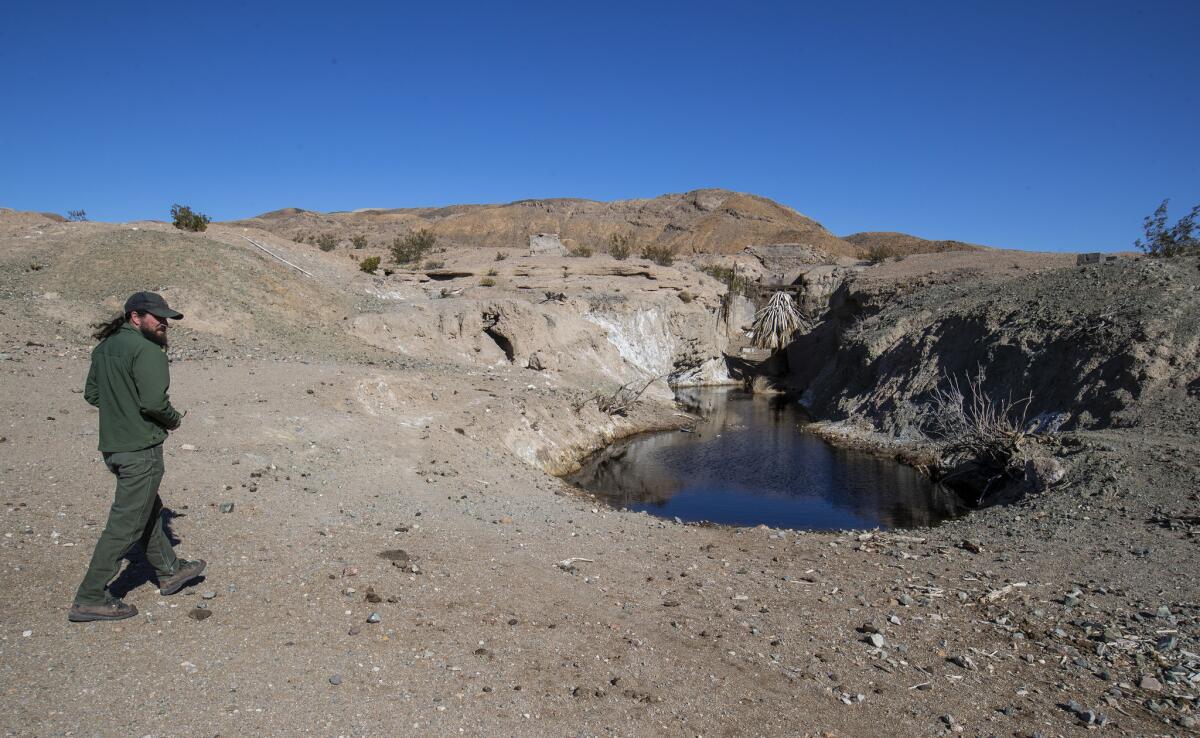
Concern over the potential for the permanent loss of wildlife habitat and wilderness spurred her California Desert Protection Act of 1994, which elevated Death Valley and Joshua Tree to national park status and created the 1.5-million acre Mojave National Preserve.
In 2016, at Feinstein’s request, President Obama broke through a logjam in Congress by acting unilaterally to create three new national monuments that expanded federal protection to 1.8 million acres of desert landscape: Mojave Trails, Sand to Snow and Castle Mountains.
The California Desert and Recreation Protection Act required new rounds of negotiations and compromises, stakeholders involved in the process said.
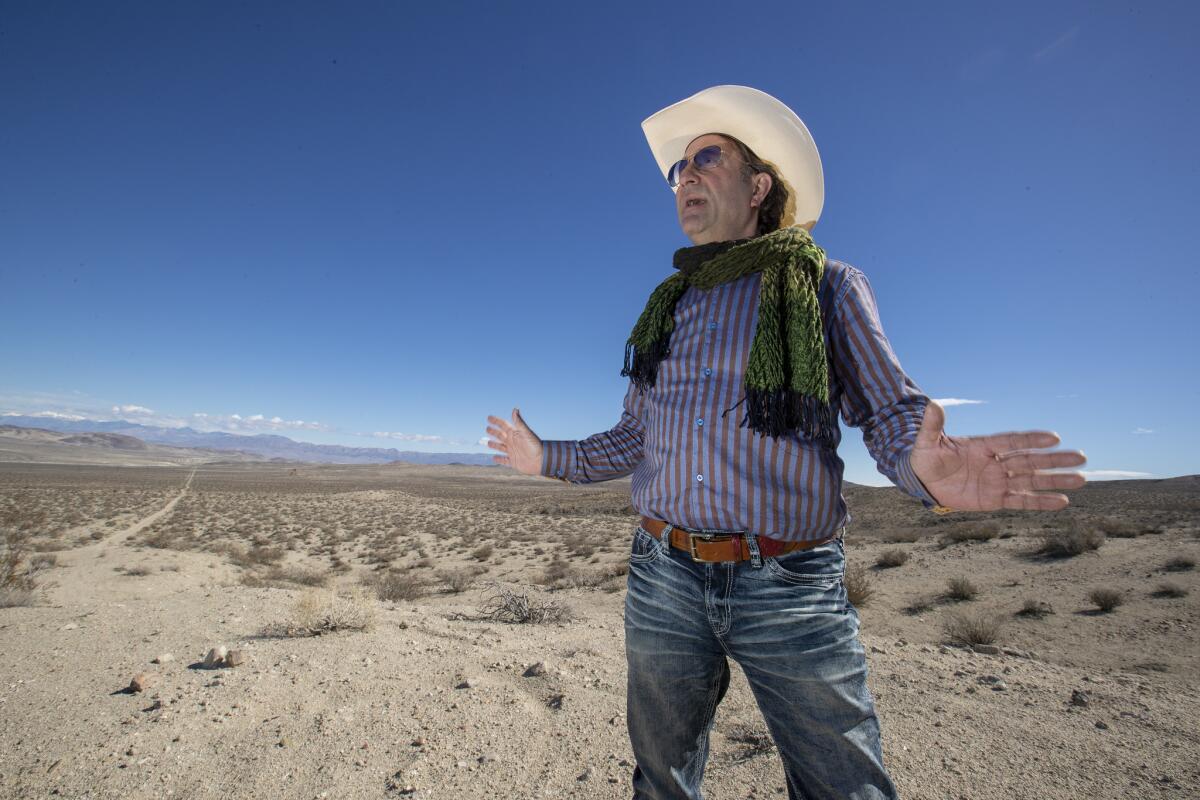
Ryan Henson, policy director of the California Wilderness Coalition, said “the most painful compromise was the removal of wilderness study area protections from 126,000 acres of land in the Mojave Desert’s Cady Mountains.
“Now, that land could be designated for possible uses including off-roading,” Henson said.
The word “national” was excluded from the titles of the six new OHV recreation areas to resolve complaints that it suggested the creation of a new layer of federal government authority. Also omitted were strict groundwater management policies and a study of the effects of climate change on fragile desert landscapes.
The language in Feinstein’s proposal to protect the Alabama Hills was taken from a separate bill introduced in the House in 2014 by Cook as part of an effort to increase bipartisan support and improve its chances for passage.
“As a conservative Republican, I have significant differences with Sen. Feinstein on many issues,” Cook said, “and when I began working on the desert legislation five years ago, we were miles apart on what should be in this bill.
“However, political differences aren’t an excuse to quit,” he added. “Elected officials have a responsibility to govern, and we seized upon common ground between the two of us and worked outward from there.”
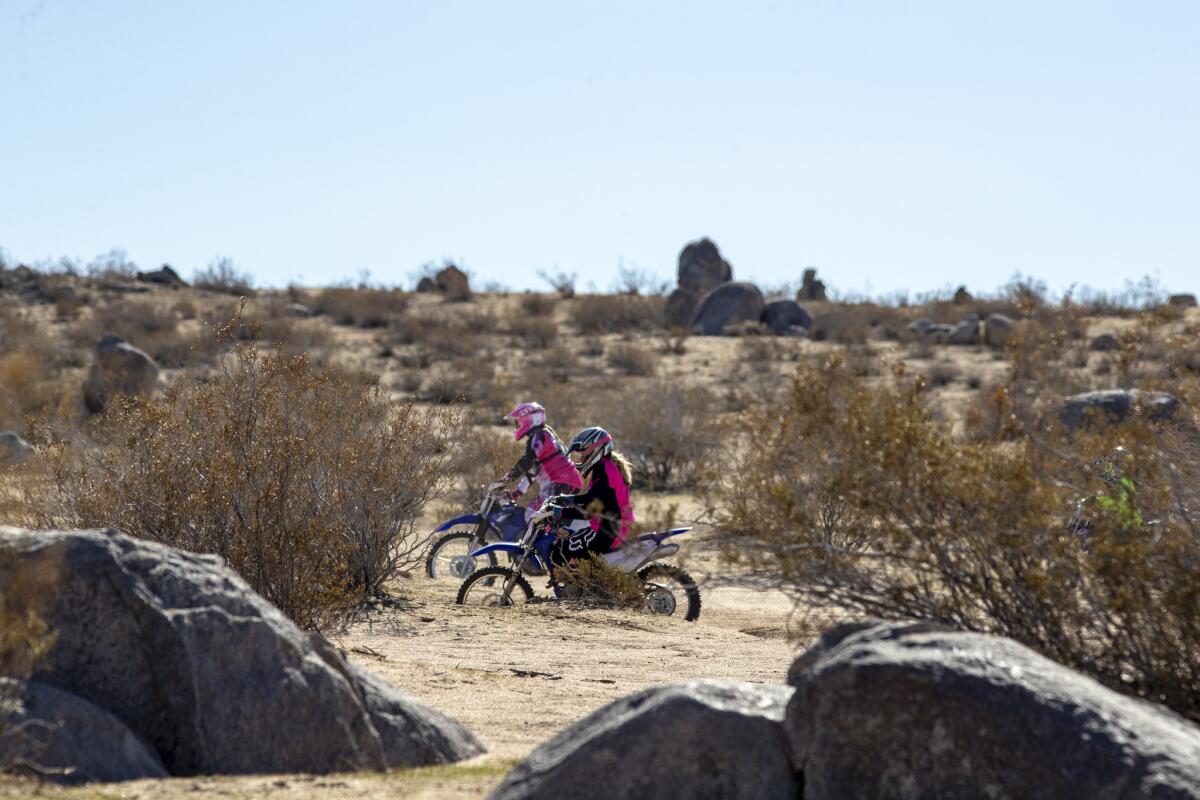
The act drew mixed reactions from Virginia Cramer, spokeswoman for the Sierra Club.
“Overall, this is a massive net conservation gain born out of bipartisan compromise — which in this Congress is as rare as it gets,” she said. “Of course, we will continue to be opposed to the use of off-road vehicles in sensitive wilderness areas.”
The new lands being absorbed by Joshua Tree National Park, which include 1,600 acres donated by the nonprofit Mojave Desert Land Trust and a forbidding strip of desert about 2 miles wide and 30 miles long at Death Valley National Park’s southern boundary, cover dense forests of Joshua tree, desolate basins, sand dunes and year-round springs framed by serrated ridges.
Wildlife such as bighorn sheep come to the Death Valley region for its life-giving Amargosa River flood plain and migratory corridors linking the park with wilderness areas and Joshua Tree National Park, more than 200 miles to the south.
“Spring brings a dazzling riot of life to the Amargosa flood plain,” said David Lamfrom, director of California desert and wildlife programs for the National Parks Conservation Assn. “It becomes a sea of purple sand verbena flowers and minty scents buzzing with insects.”
On a recent cool, crisp morning, Jeremy Stoltzfus’ white SUV was the only vehicle in sight along a dirt road lined with creosote bushes and curious feral burros in the Death Valley area that federal map makers have dubbed “the bowling alley.”
The road streaked between the barren flanks of the desolate Owlshead Mountains and the U.S. Army’s sprawling desert training center at Ft. Irwin.
“This is one of the most remote and least visited areas in all of Death Valley,” Stoltzfus said as he brought his vehicle to an abrupt stop near a murky spring at the base of a hill that bristled with the remnants of a World War II-era manganese mine.
“Hiking out here means you’re likely to be the only human being within a radius of 15 miles or more,” he said. “And that’s what I love most about this place.”
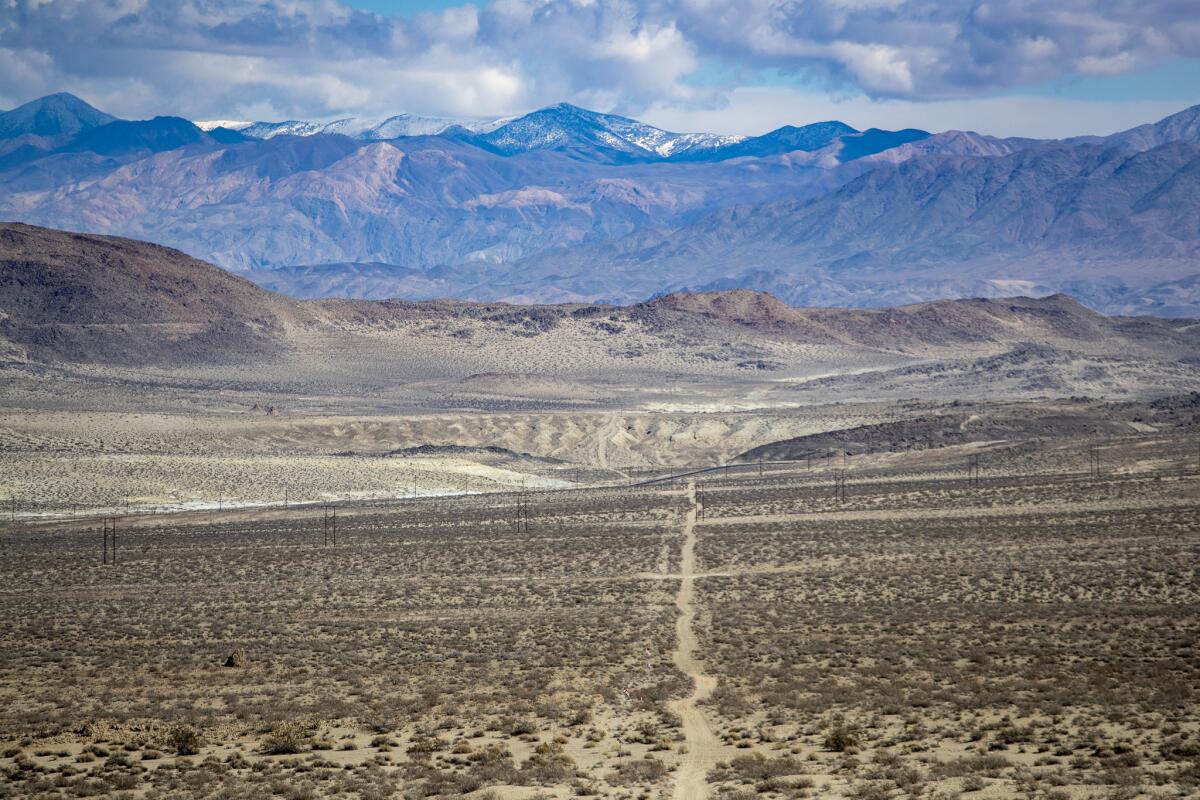
More to Read
Start your day right
Sign up for Essential California for news, features and recommendations from the L.A. Times and beyond in your inbox six days a week.
You may occasionally receive promotional content from the Los Angeles Times.







